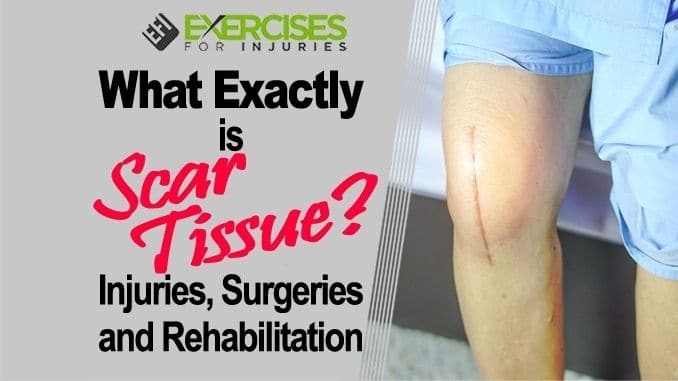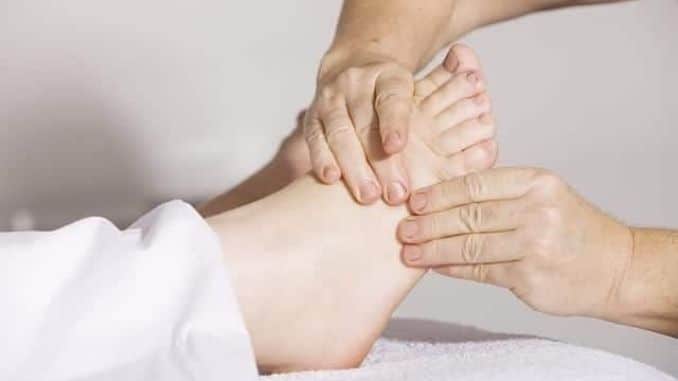
When most people think of a scar, they imagine healed skin that doesn’t appear normal. Even though this is a common type of scar, other types of scar tissue also exist. In some cases, scar tissue can be hidden, such as after surgery, and it might lead to physical symptoms. So, let’s look at the different types of scars, how they can affect your body, and what you can do to reduce discomfort.
Skin Scar Tissue
If anyone gets a cut on their skin, the body instantly begins the self-repair process. Understanding this process certianly helps us see why scars form as well.
The stages of wound healing are:
1. Stage One: 2-5 Days
-
- Clotting factors and platelets stop the bleeding within in minutes.
- Blood clots form a scab to offer early wound protection
- The wound swells and becomes red or pink and tender
- Clear fluid may ooze to help clean the wound
- New blood vessels form to bring oxygen and nutrients and to remove toxins
- White blood cells fight infection and help wound healing
2. Stage Two: 3 Weeks
-
- Red blood cells lay down collagen (tough fibers used to form new tissue)
- New tissue (granulation tissue) begins to fill the wound
- New skin begins to appear on the wound edges
- Edges pull inward to reduce wound size
- Eventually, the scab falls off; the wound looks stretched, red and glossy
- A scar appears smaller than the original wound; scars are weaker and stiffer than normal skin
Scars can fade away and even disappear after a year or so for smaller wounds. Superficial wounds often do not form a scar, but deeper wounds typically end up with scar formation.
How Scar Tissue May Affect Function
Since scar tissue is stiff, and this can affect body function. For example, let’s say you injure your hand severely, like after a burn. The scar tissue that forms after healing may end up limiting the use of your hand. If we take this concept further, we can see how hidden scars could affect you in more ways than one.
Overuse Scars
Any part of the body that sees repetitive use may also suffer from microtrauma. Just like a skin injury can lead to a scar, internal microtrauma can also generate scar tissue. So, let’s say you play tennis. The repeated tennis stroke arm movement can eventually lead to tendonitis in the elbow. At this stage, there is no scar tissue. However, as tendonitis heals it may lead to scar formation in the tendon, especially if the tendonitis is chronic or recurrent.
The result may be a loss of function. In the tennis elbow example, you might end up with joint stiffness or pain that is not due to active tendonitis.
Repetitive Strain Injury
Tennis elbow is a form of repetitive strain injury that also occurs in conditions like trigger finger, golfer’s elbow and carpal tunnel syndrome. In time, microtrauma leads to scar formation on damaged muscle or tendons. Because scar tissue occupies more space than normal tissue, this can cause symptoms. Tendons operate like cables that run inside tubes. If these cables get thickened due to scarring, they don’t move as smoothly and can get stuck.
Normally, the body can heal itself, and no significant scar tissue forms. However, if the body part is repeatedly used, proper healing can’t take place. This can even happen in skin wounds when scabs are removed before complete healing occurs underneath.
Examples of symptoms of repetitive strain injury (RSI) in the hand/wrist can be:
- Pain that shoots, burns, or aches
- Trouble with coordination or numbness
- Muscle weakness, especially the hands, wrists or forearms
- Difficulty with tasks like tearing open a bag, opening a jar or when using your fingers
- Cold hands or fingertips
Post-surgical Scar Problems
Nobody is surprised to have a scar after surgery. Still, for some operations, the resulting scar tissue may be more noticeable than others. When you have an operation, the surgeon’s scalpel cuts through much more than just skin. Any damage to the underlying tissue can also lead to scar formation that you don’t see.
One classic example may occur after intestinal surgery. If significant scar tissue forms inside your abdominal cavity, it could indeed lead to intestinal squeezing or constriction. This could cause digestion problems or even complete intestinal obstruction, which might require another surgery to resolve.
Another example is a frozen shoulder after shoulder surgery. The tissues and nerves surrounding the shoulder get irritated and also inflamed. There is an element of scar tissue formation as well. Eventually, you could lose nearly all range of motion of the shoulder joint.
Preventing and Treating Skin Scars
If you have a skin injury, these steps help minimize scar formation:
1. Clean The wound
Wash gently with warm soapy water.
2. Keep the wound Moist
Apply petroleum jelly and clean the area daily.
3. Cover The Wound With A Bandage
Make sure none of the adhesive sticks to the wound. Hydrogel or silicone gel sheet may be used for larger wounds.
4. Change The Bandage And Wash The Wound Daily
Preventing RSI Or Post-operative Surgical Scarring
Before you even have surgery, ask if minimally invasive surgery is an option. This kind of procedure involves making very small cuts to reach inside your body. Surgeons also use long slender instruments and a tiny camera to do the operation. Minimally invasive techniques are indeed one of the best ways to avoid scar formation.
Moreover, after you have surgery on a limb or joint, one of the keys to recovery is physical therapy. This may also include exercises, massage, and ultrasound techniques. Don’t rely only on sessions at the therapist’s office. Make sure you follow the home instructions faithfully to ensure you regain as much function as possible.
Furthermore, if you are in an overuse situation at work or from sports activities, be conscious of the risk of RSI. Proper form and posture make a big difference. Warm up appropriately and take frequent microbreaks to stretch and also rest. If you notice discomfort, make sure you let your body recover properly. Overdo it, and you increase your risk of scar formation.
What About Treating An Existing Scar?
Some options for reducing skin scars include:
-
Gels And Silicone Scar Sheets
Used to improve skin color and texture of the scar.
-
Steroid Injections
Can reduce scar size.
-
Dermabrasion And Laser Therapy
Reduce scar size and may improve color and texture.
For internal scars, the treatment options are physical therapy and surgical release. Even if surgery caused the internal scar in the first place, release procedures often yield a good result. Typically, about 70 percent improve, 20 percent stay the same and 10 percent get worse after revision surgery. The severity of the symptoms and the type of surgery help you decide if an operation is worth the risk.
What About Keloids?
For some people, scar formation is more pronounced than in others. This can lead to scars that are larger than normal (called keloids). Keloids are more likely to form on the chest, shoulder, upper chest and back, earlobes and face. These kinds of scars are more common in those with dark skin, and it’s thought that dark skin pigment may play a role in keloid development.
Since keloids are larger, they can interfere with activity and get irritated easily. Also, if they are on a visible part of the body, you might feel self-conscious about how a keloid looks.
Keloid treatment options include:
1. Cryotherapy
Freezing the scar to shrink or remove it.
2. Steroid Injection
Often used together with cryotherapy.
3. Other Medications
Include verapamil, fluorouracil, bleomycin and interferon alfa-2b shots.
4. Surgery
May lead to new keloid formation, but post-surgical treatment with steroids may help prevent this.
5. Radiation
Reserved for when other options fail and the keloid is very bothersome.
To prevent keloid formation, it’s important to follow the wound care techniques described earlier in this article. Also, since keloids grow slowly, it helps to keep the wound covered and under pressure. Silicone gel bandages may work to help prevent keloid formation. For the best results, keep the wound covered for two to three months.
All Scars Are Related
Think back to when we described how wounds heal. You can see the same principles can create scars in any part of the body. Protect yourself from injury and treat any damage correctly.
For your guide to the best foods to heal your body, check out The Best Foods that Rapidly Slim & Heal in 7 Days, here!




